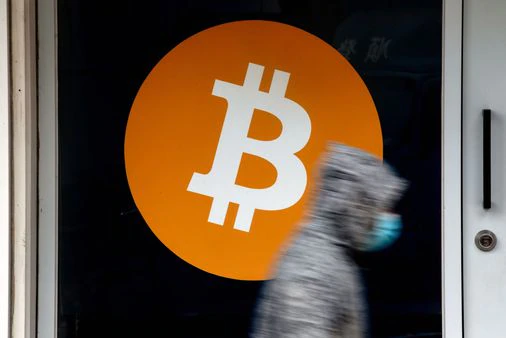As restaurants’ labor challenges combine with rising food costs and other supply chain issues to present new challenges, the need to leverage technology for greater operational efficiency becomes increasingly pressing. As such, many businesses are seeking out automated solutions to reduce their labor needs, leading to rapid innovations in restaurant robotics.
However, in an interview with PYMNTS, Jake Brewer, chief strategy officer at foodservice industry Robots-as-a-Service company Miso Robotics, cautioned that the rush to develop new products could come at the cost of making the best use of existing technologies.
“It’s the old adage: One in the hand is worth two in the bush,” said Brewer. “You could always be chasing two of those two birds in the bush and never actually get them … A lot of these brands, Miso included, have several products in hand that we know work and we know solve a big problem in the industry … [Some] people are chasing that next big innovation for forever, and they never actually get their first thing off the ground.”
Miso, for its part, has rolled out a robotic frier, with an artificial intelligence (AI) grill sensor system and an automated beverage dispenser soon to hit the market. At the start of the month, the company announced the opening of its Series E funding round, following on its $50 million raise in its Series C and D rounds.
The Digital Ordering Effect
Brewer argued that, with the rise of digital ordering making consumers more likely to place remote orders, restaurants cannot depend on order flow to follow the patterns that they might typically expect, making it more likely that a restaurant might get backed up fulfilling an unexpected large order.
For example, he said, “If the 10th floor of the office park down the road with 200 people in it all of a sudden is like, ‘You know what? Let’s order Chipotle today,’ [a restaurant] can [be] having a normal day, and boom, you have a huge order.”
He contended that, while these unexpected large orders can present a valuable sales opportunity, they can present labor challenges for short-staffed restaurants, increasing the need for automated solutions.
According to data from PYMNTS’ 2022 Restaurant Friction Index, created in collaboration with Paytronix, 41% of restaurants’ sales are generated via digital channels. Plus, 58% of quick-service restaurants (QSRs) and 42% of restaurants with table service now offer the ability to order online
Read more: New Data Show Digital Loyalty Programs Are Key Differentiator for Top-Performing Restaurants
Additionally, the study, which drew from a survey of a census-balanced panel of more than 2,100 U.S. consumers and of more than 500 restaurant managers, found that 100% of top performing restaurants offered the ability to order online and pick up the food in the store. Meanwhile, only a third of bottom performers offer the same.
Meanwhile, in the Front of House
Automation is not only helping restaurants address labor challenges in their kitchens. Brewer noted that the front-of-house automation space is further along, with AI-powered drive-thru voice ordering well on its way. Additionally, consumers are already growing comfortable with the technology.
“There’s a lot of people who’ve talked to a Siri, they talk to Alexa, they talk to Google Home,” he said. “And so, talking to someone who’s an AI voice assistant, say, in the drive-thru is a normalized, more mature technology sector in the restaurant industry.”
He argued that back-of-house automation can be more complicated because the work is being split between the machines and the human employees, which both need to work together, with robots covering the tasks that are repetitive, dangerous and/or unpleasant and with humans doing the rest of the work.
“Those are the two trends I see — people focusing on transplanting current-day technology or … implementing [robotics technology] in a new way to a new space,” he said.
The Next Big Thing
Looking toward the future, Brewer said he is “really excited” about the possibility of “cobotics” — robots that are truly able to collaborate with humans on joint tasks — in the restaurant industry. He noted that this kind of technology could be anywhere between five years and 15 years out.
“No one’s going to be releasing true cobotics in broad scale [anytime soon],” he said.
In the nearer future, he said he believes that restaurants’ digital systems will become increasingly able to communicate with each other, with humans taking a smaller and smaller role in the process. Miso’s upcoming robotic beverage dispenser, for instance, is compatible with restaurants’ point-of-sale (POS) systems to automatically fulfill the order.
Brewer predicted that the space may evolve to be more digitally integrated within the next year to 18 months.
“I really think the brands will start to truly integrate some of these things where, as you order on, say, your mobile app, it’s flowing all the way from your phone to the restaurant point of sale straight to the robot,” he said. “Like, the restaurant might react to an order before the human labor in the restaurant actually understands what’s happening because it flows automatically.”
——————————
NEW PYMNTS DATA: ACCOUNT OPENING AND LOAN SERVICING IN THE DIGITAL ENVIRONMENT
About: Forty-two percent of U.S. consumers are more likely to open accounts with FIs that make it easy to auto-share their banking details during sign-up. The PYMNTS study Account Opening And Loan Servicing In The Digital Environment, surveyed 2,300 consumers to examine how FIs can leverage open banking to engage customers and create a better account opening experience.
Credit: Source link





















